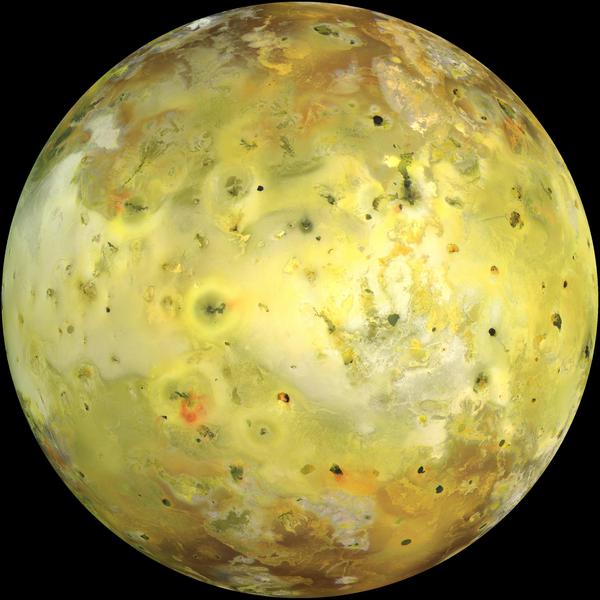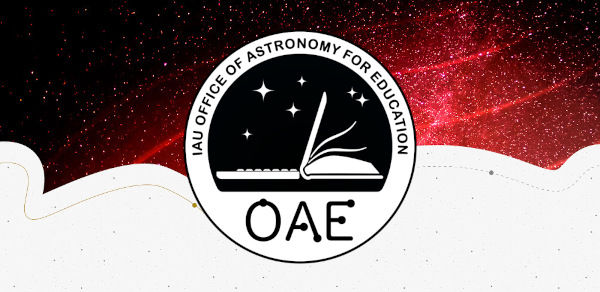This page describes an image Io
Image caption:
NASA's Galileo spacecraft acquired its highest resolution images of Jupiter's moon Io on 3 July 1999. Io is one of the four Jovian moons discovered by Galileo Galilei in 1610. Io's colours are witness to its extensive volcanic activity as they stem from sulphuric compounds. Tidal forces from Jupiter and the neighbouring moons are the cause for Io's volcanism.
Scroll to captions in other languages
Image credit:
NASA/JPL/University of Arizona Credit Link
Related glossary terms:
Galilean Satellites
, Io
, Moons
Categories:
Solar System
Image license: Public Domain Public Domain icons
The media file captions presented on the OAE website were written, translated and reviewed by a collective effort from the OAE, the OAE Centers and Nodes, the OAE National Astronomy Education Coordinators (NAECs) and other volunteers. You can find a full list of credits for our translation project here. All media file captions are released under a Creative Commons CC BY-4.0 license and should be credited to "IAU OAE". The media files themselves may have different licenses (see above) and should be credited as listed above under "credit".
Captions in Different Languages:
Image caption: Le 3 juillet 1999, la sonde spatiale Galileo de la NASA a acquis les images à la plus haute résolution du satellite de Jupiter Io. Io est l'une des quatre lunes joviennes découvertes par Galilée en 1610. Les couleurs de Io témoignent de son importante activité volcanique, car elles proviennent de composés sulfuriques. Les forces de marée de Jupiter et des satellites voisins sont à l'origine du volcanisme de Io.
Image credit: NASA/JPL/Université d'Arizona
Related glossary terms: Io , Lunes , Satellites galiléens Caption translation status: Approved by a reviewer
Caption translators: Gilles Remy
Caption reviewers: Christophe Hermant
Image caption: La sonda Galileo della NASA ha acquisito le immagini a più alta risoluzione della luna di Giove Io il 3 luglio 1999. Io è una delle quattro lune gioviane, scoperte da Galileo Galilei nel 1610. I colori di Io testimoniano la sua vasta attività vulcanica, poiché derivano da composti solforici. Le forze di marea di Giove e delle lune vicine sono la causa del vulcanismo di Io.
Image credit: NASA/JPL/Università dell'Arizona
Related glossary terms: Io , Lune , Satelliti galileiani Caption translation status: Approved by a reviewer
Caption translators: Giuliana Giobbi
Caption reviewers: Rosa Valiante, Rodolfo Canestrari
Image caption: 美国国家航空航天局的伽利略号航天器于1999年7月3日获得了木星卫星木卫一的最高分辨率图像。木卫一是伽利略-伽利雷 1610 年发现的四颗卫星之一。木卫一的颜色源于硫化物,是大量火山活动存在的证据。木星和邻近卫星的潮汐力是木卫一火山活动的原因。
Image credit: 美国宇航局/JPL/亚利桑那大学
Related glossary terms: Moons , 伽利略卫星 , 木卫一,音译为艾奥 Caption translation status: Not yet approved by a reviewer
Caption translators: Lin Shijie
Caption reviewers: Zhang Ruoyi, Wang Yilin
Image caption: 美國國家航空航天局的伽利略號航天器於1999年7月3日獲得了木星衛星木衛一的最高分辨率圖像。木衛一是伽利略-伽利雷 1610 年發現的四顆衛星之一。木衛一的顏色源於硫化物,是大量火山活動存在的證據。木星和鄰近衛星的潮汐力是木衛一火山活動的原因。
Image credit: 美國宇航局/JPL/亞利桑那大學
Related glossary terms: Moons , 伽利略衛星 , 木衛一,音譯為艾奧 Caption translation status: Not yet approved by a reviewer
Caption translators: An automated transliteration from the simplified Chinese translation by - Lin Shijie









